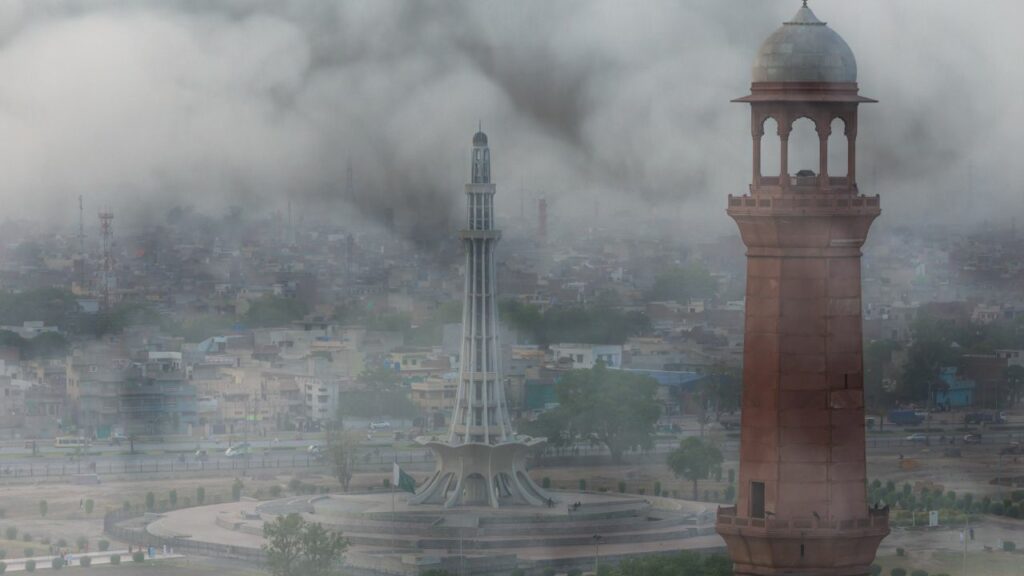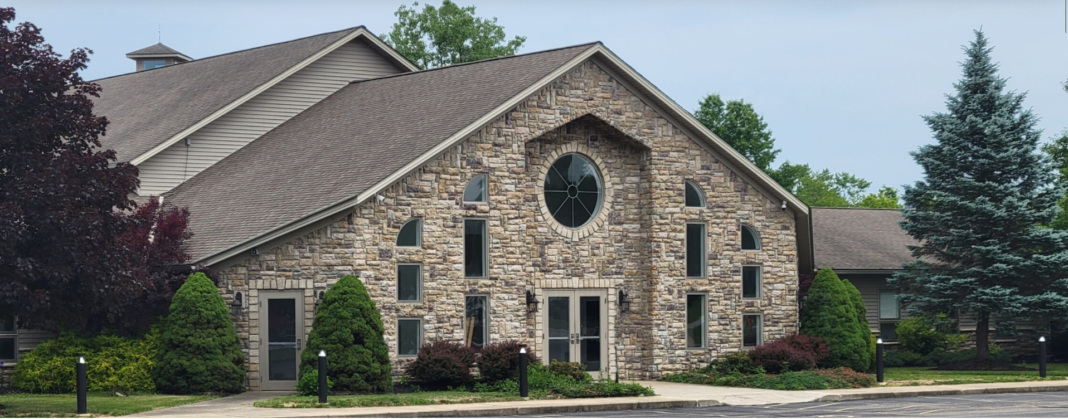By: Rameen Habib

The names of seasons should be changed in Pakistan. Monsoon should be named the season of dengue and typhoid, Autumn along with winter being the season of smog and spring being the season of viral infections and allergies. Living in Pakistan is already difficult with the continuous rise in inflation, political instability, and mounting insecurity climate change seems to be the cherry on top. Last year’s summer heat witnessed by the people of this nation was record-breaking high with winters being harsh and unpredictable.
As a resident of the hustling and bustling city, of Lahore, I believe that life here is slowly but surely becoming a health hazard. Clear skies are something that we rarely get to see now, rather it’s always smoky, dusty and very noisy. I remember when I was young, Lahore was green. It is after all known as the ‘City of gardens’ but now that name tag feels just like a mere facade. Recently, I visited the infamous Jillani Park, before their Annual Spring exhibition. It was so underwhelming to be there in the midst of all the litter, unmaintained benches and broken boats that were just trying their best to stay afloat. The leaves and the flowers were completely covered with dust. The public toilets and canteens felt stuck in time with no signs of maintenance around them. To witness one of the best parks of the metropolitan city Lahore with patches on the ground where no grass was to be found but litter certainly was present, was nothing but depressing and forces one to think that maybe, the dream of a green Lahore is slowly slipping away.
Multiple large-scale projects have been completed and are being approved in Lahore. The most recent one is the mega project where hundreds and billions of rupees were spent to make a signal-free corridor from Kalma Chowk to Defence Mor. The authorities claimed that this project was approved to help with the fast-growing traffic in the hub of Lahore and help lower the air pollution as well. It’s been quite a few months since this project was completed, and it wouldn’t be unfair if one is to say this billion-dollar project has been nothing but a flop. All DHA bound traffic is forced to use this route making it even more choked with traffic than it was before with change. Some of the signal-free plans have worsened the traffic as they were approved and made without any proper planning for the long run. Signal-free corridors were built under the notion to create ease in reaching one’s destination but in most instances, the outcome has been the opposite.
Another dilemma that the administrators behind this project are in was that, ‘signal-free gives cleaner air’. Even if this project was successful in improving the flow of traffic, it wouldn’t lower the levels of smog as the issue is not being properly addressed. Making infrastructures that are solely car-centric, encourage the use of vehicles and are unfriendly for pedestrians and cyclists – would only lead to an increase in vehicular traffic, consequently, increasing exhaust emissions. This would only lead to a rise in air pollution rather than lowering it. Lahore has definitely developed immensely over the past few years, but this development has caused its nature to deteriorate.
According to the Global Climate Risk Index, Pakistan is ranked as the 5th most vulnerable country to climate change even though we are only a 0.9 percent contributor to global greenhouse gas (GCH) emissions. The devastating and unprecedented floods of August 2022, affected 33 million people, including 16 million children. One-third of the country was submerged and around 2000 precious lives were lost. Others ended up losing their houses, schools, health facilities, and cattle thus deteriorating an already weak economic situation. Our external debt reached up to $125 billion and inflation was at a record high of 38%. Scientists have deemed climate change to be the cause of such huge floods as Pakistan received more than three times its average rainfall in August 2022, making it the wettest August since 1961.
However, the most recent climate issue in 2023 and 2024 has been smog. The World Air Quality Index (AQI) has consistently ranked Lahore, Faisalabad and Karachi as the most polluted cities in the country. Smog levels in Lahore were at a record-breaking high, reaching an air quality level that is hazardous to breathe in. The government had even shut down educational institutions in December 2023 to save the youth from being exposed to smog. Dozens of cases relating to difficulty in breathing, coughing and itching in the eyes were reported in the hospitals. According to Human Rights Watch, living in Lahore, the most polluted country in the world, cuts your life expectancy short by 7 years due to its pollution. World leaders or even ministers at a local level fail to grasp the magnitude of this issue. Focusing on the infrastructure and development of a city is always a step that is beneficial for the public, but it shouldn’t be at the cost of them living a life where nature gets cut down. We also have seen instances when mother nature strikes back, reminding us of the consequences of neglecting our environment.
It’s high time for policymakers to prioritize sustainable development over short-term gains. The alarming rise in pollution levels, coupled with the increasing frequency of extreme weather events, demands immediate action. Raising awareness among the populace about the detrimental effects of climate change is crucial, as is fostering a culture of environmental responsibility. The time for complacency is over and we must confront the realities of climate change head-on and take decisive steps to mitigate its impact for our survival at least.
The writer is a law student and a freelance writer. She can be reached at [email protected]


